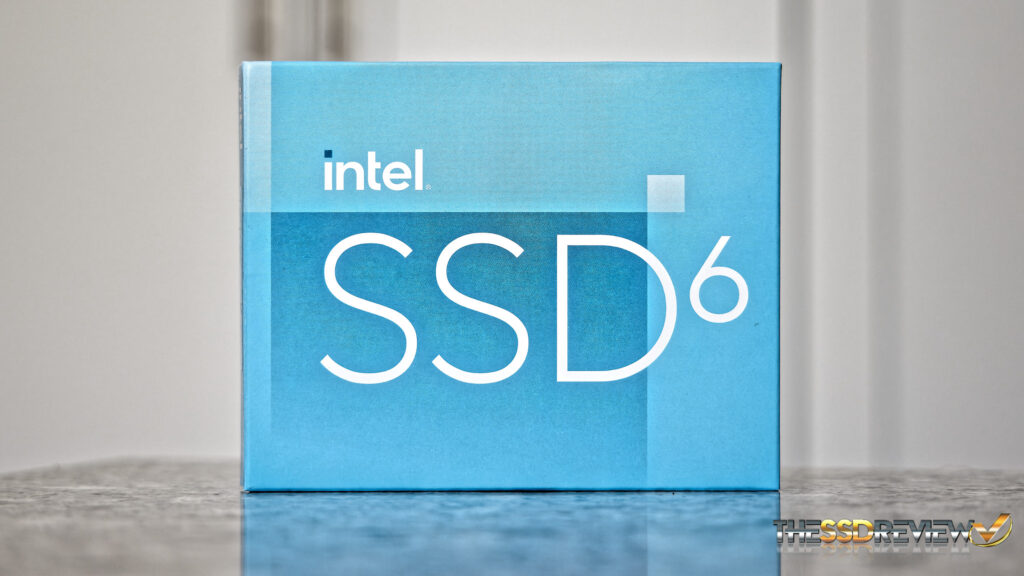Many many not consider how SSDs have changed from generation to generation but, throughout the years, the push forward has been increased on capacity and top tier performance. In order to achieve a larger capacity, the flash memory footprint has to be reduced and layers stacked, much like we see in apartment buildings, for the most part. The challenge of course, is improving performance while ensuring that SSDs have a lifespan that will outlast their need. This is exactly why 5-year warranties have become the norm. 
Intel has been somewhat of a dark horse throughout the years as they were amongst the first to jump into SSDs, yet if you look at their progression, they seem to have stayed outside ‘the crowd’ that are always trying to push things bigger, faster and better. As an example, we haven’t traditionally seen Intel marketing their speed or capacity points to better the competition, and we have yet to see an Intel Gen 4 SSD. While the Gen4 SSD answer lies in the fact that they haven’t brought PCIe 4.0 to market at the CPU level as of yet, they have given us Optane which may still be the best we have seen in SSDs to date…only to have them remove it from consumer retail channels most recently.
Even today, we are looking at the newest Intel SSD6 670p Gen3 NVMe SSD with write specs below 3GB/s which again, aren’t that common these days. Unlike many though, Intel can pull it off. They have a massive following and a character strength that their SSDs are solid and their performance is right up there with the best. Unlike so many others, people don’t wonder if the Intel SSD will fail or not. There is something rather special about this new release, the SSD6 670P and, well, at least we think that our report on this new release will provide a great representation of that Intel character of which we speak.
The Intel 670p is a PCIe 3.0 x4 (4 lane) M.2 SSD that is available in capacities of 512GB, 1 and 2TB, and uses the NVMe 1.4 protocol. Its performance is listed as 3500MB/s read and 2700MB/s write for the 2TB capacity we are testing today, and drops a bit lower with the 1TB (3500/2500) and 512GB (3000/1600) capacities. The 670p has a 5-year limited warranty with a 185TBW rating for the 512GB, which doubles as we move to 1TB, and then again to 2TB.
Removing the branding sticker, we can identify the 670p as being a single-sided 2280 (80mm) SSD with components set into a green PCB (printed circuit board). On the left, we see the SMI SM2265G 4-channel controller which has a 28nm footprint and contains a Dual ARM Cortex R5 CPU. To the left of that is a single NANYA DDR4 DRAM buffer chip and then two packages of the latest Intel 144-layer QLC NAND flash memory, each having a RAW value of 1TB capacity. Intel relates that their newest 144-layer QLC (Quad-level cell) NAND flash memory achieves 33% more capacity in the same footprint as TLC memory.
SLC cache is a must have for pretty much any SSD post MLC and the 670p is no different. Specific to the 2TB version of the 670p, this SSD has a total 280GB SLC cache to which 24GB is listed as static SLC cache while 256GB is Dynamic SLC cache which can vary depending on the amount of used SSD capacity. MSRP for the Intel SSD6 670p NVMe SSD is set at $89 (512GB), $154 (1TB) and $329(2TB) which puts it higher than competing products at this time. Check Amazon pricing for the Intel 670p.
INTEL MEMORY AND STORAGE TOOL (INTEL MAS)
Available free from Intel is their own Intel Memory and Storage Tool which provides a number of features to, not only maintain the performance of your 670p but also, to increase its speed. Simply click on the title above. Its features include Drive Summary, Drive Details, Diagnostic Scan, Firmware Update, Secure Erase, SSD Optimizer and Performance Booster. We will demonstrate Performance Booster as part of the benchmarking metrics later in this report.
 The SSD Review The Worlds Dedicated SSD Education and Review Resource |
The SSD Review The Worlds Dedicated SSD Education and Review Resource | 

Hey there Les, thanks for the review. From the benchmarks you’ve posted this seems like a great drive, especially for a drive with QLC flash. I am concerned that the performance will drop significantly when the drive is full of data, because it uses QLC and it has a Silicon Motion controller, and Silicon Motion optimizes its controllers to have strong performance when empty. Do you have any performance benchmarks when the drive is full of data, or 80% / 90% full?
Thank you for your interest in our website and welcome. Unfortunately, we haven’t traditionally done fill testing and have no plans to do such for this SSD at this time. If something should change, we will amend the report accordingly.
Les
What is the reliability (in P/E cycles) of the NAND that Intel used for this drive?